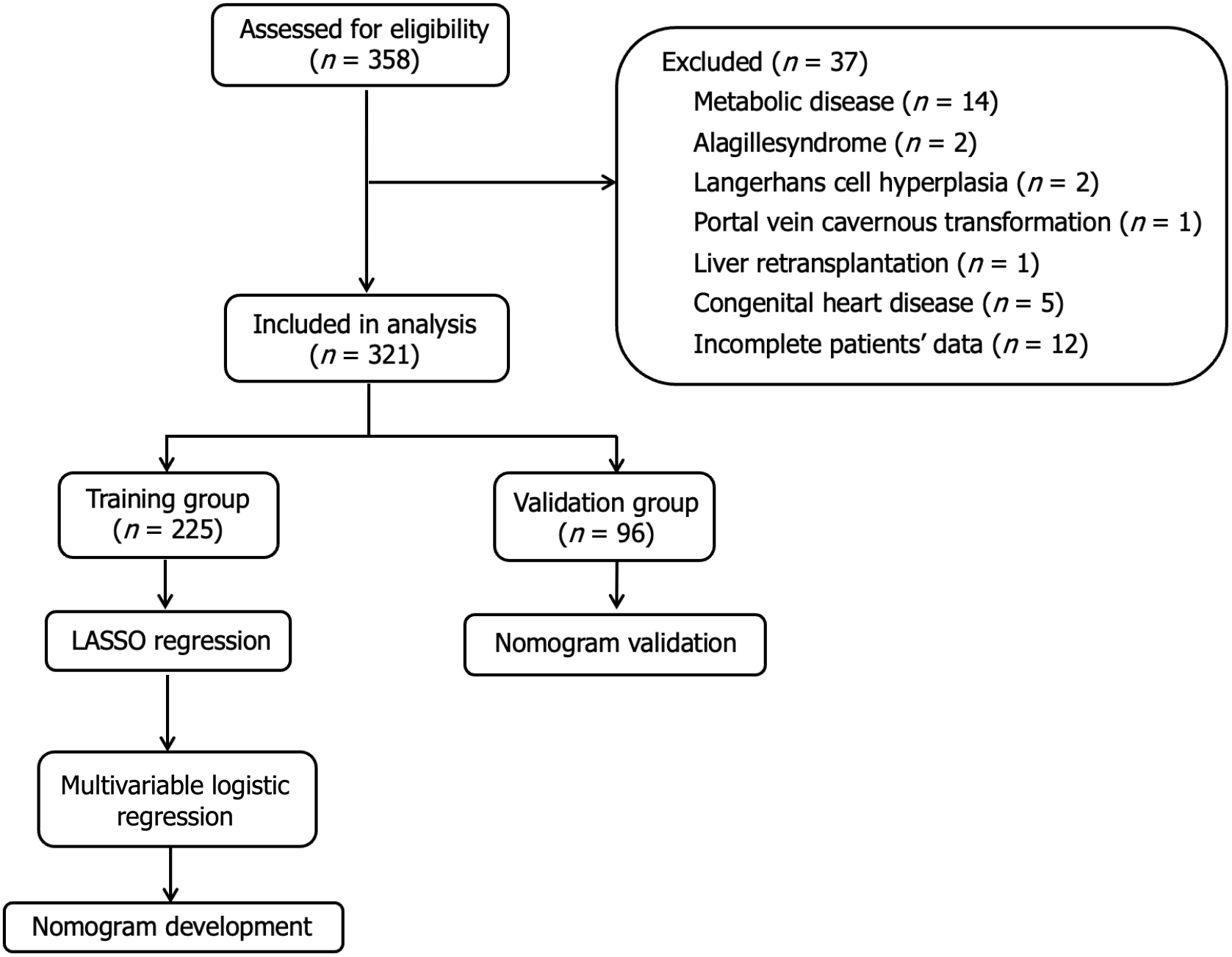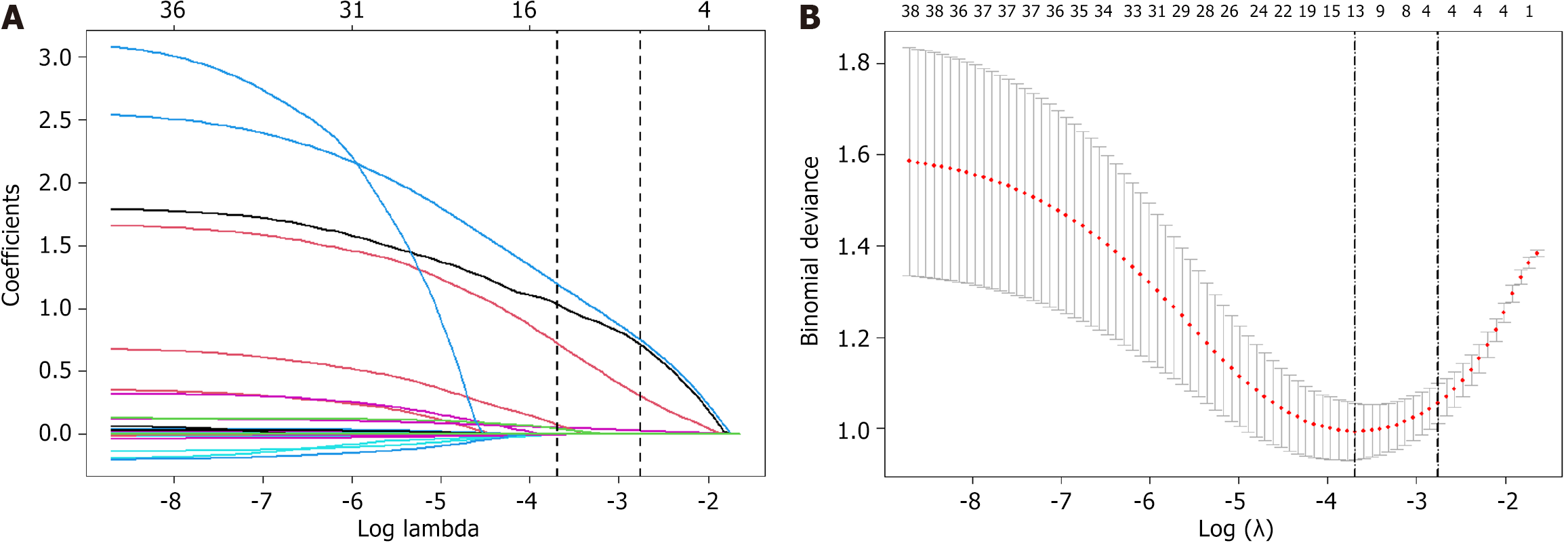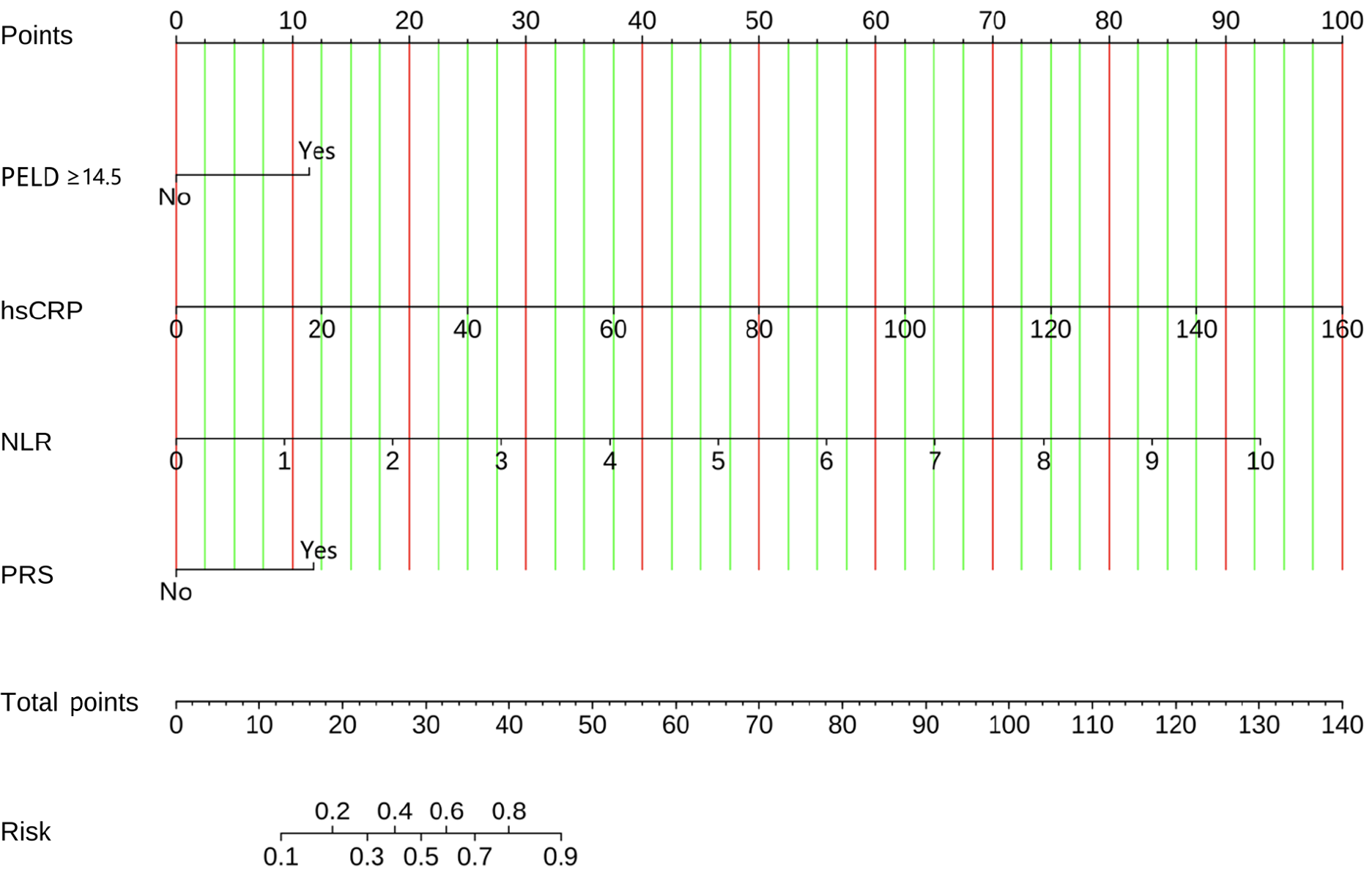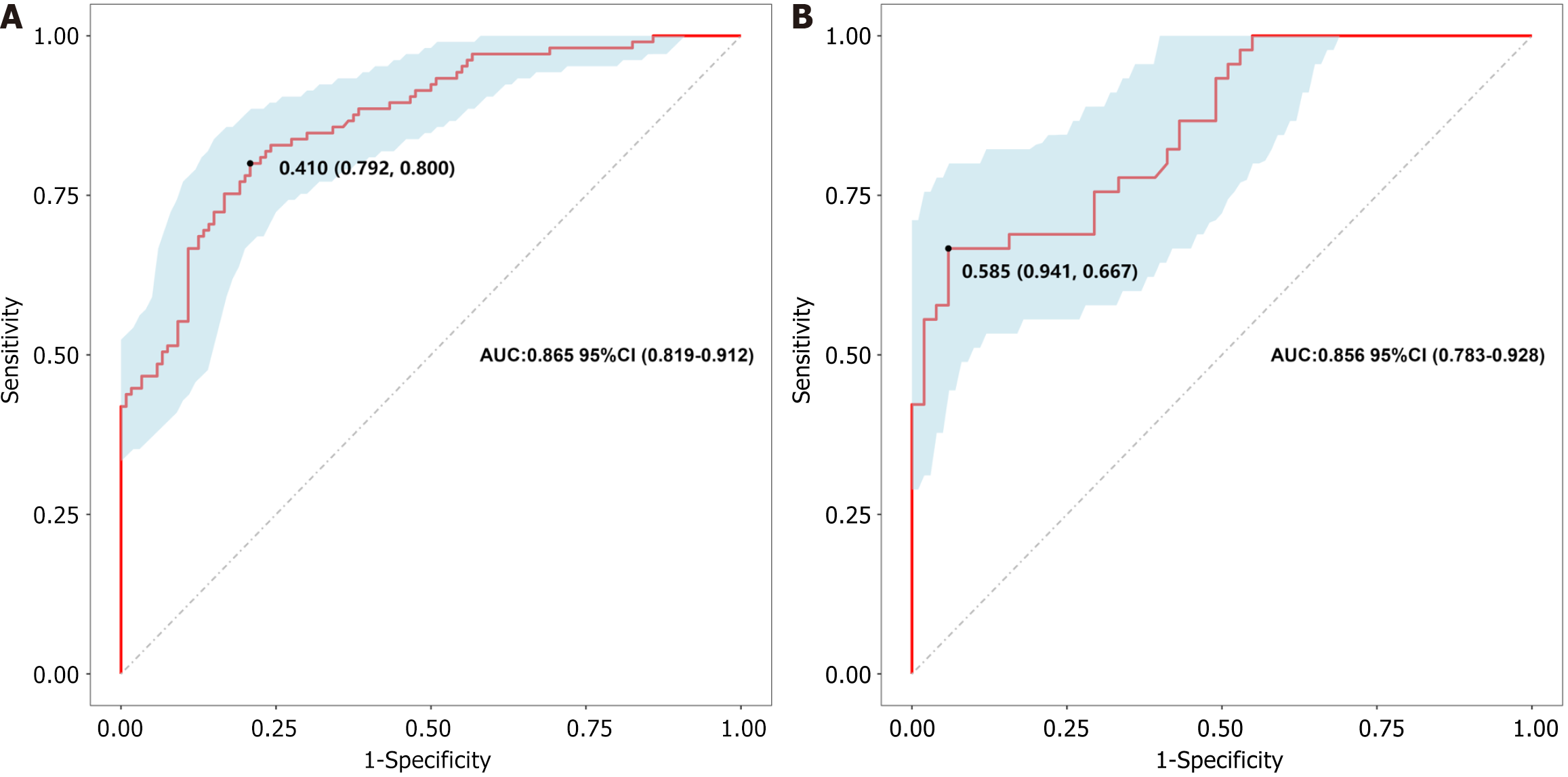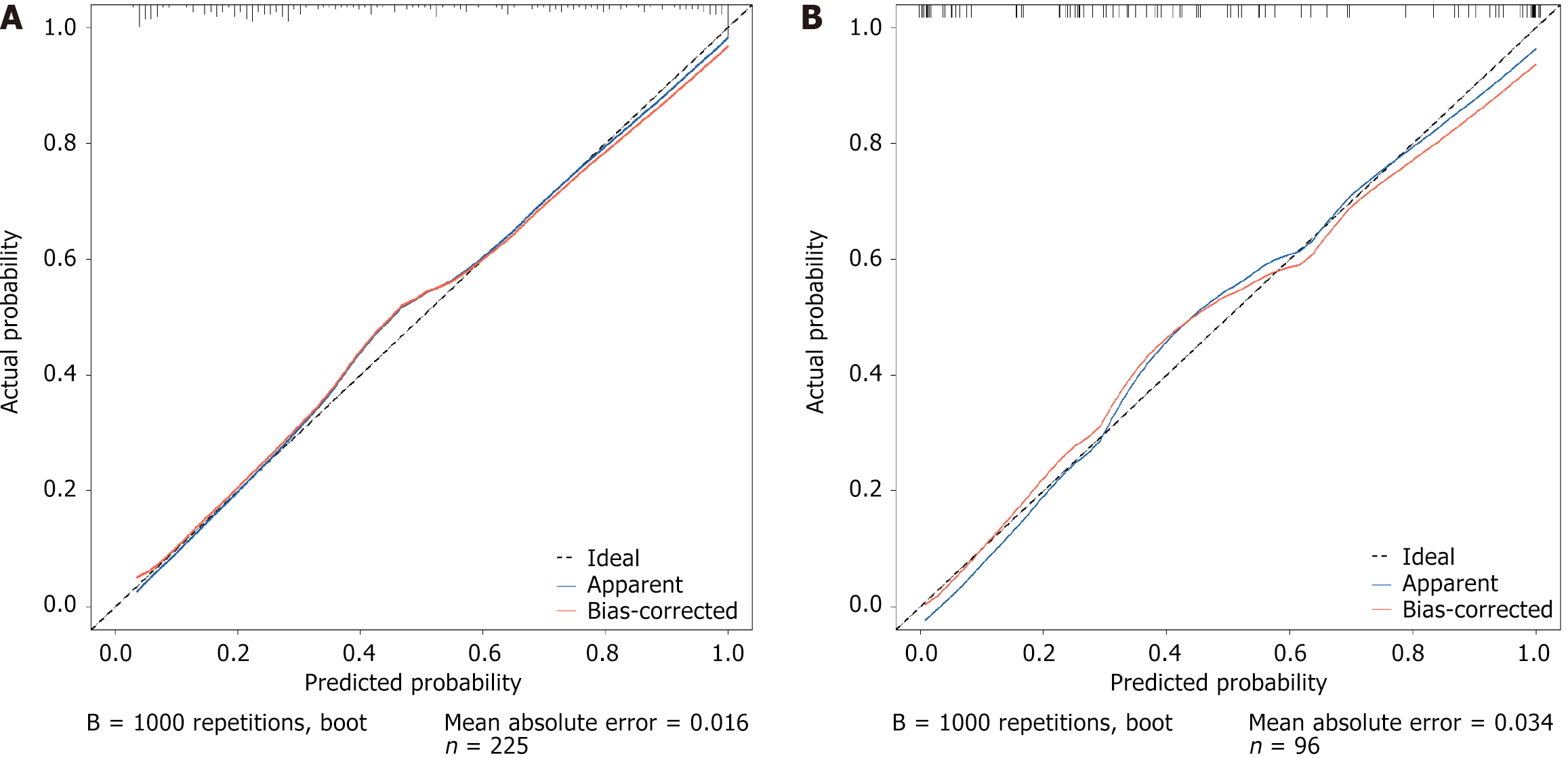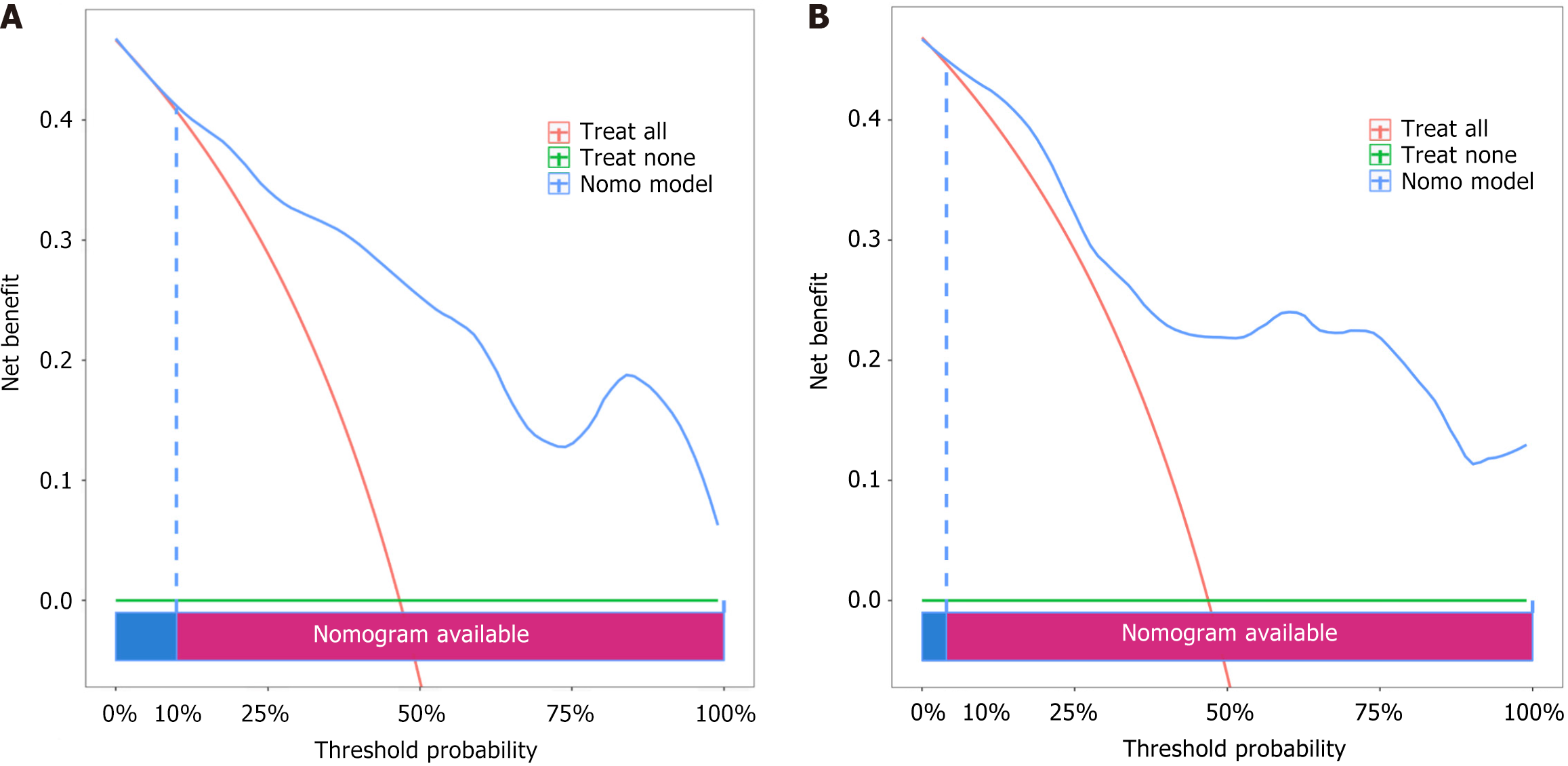Copyright
©The Author(s) 2025.
World J Gastrointest Surg. Apr 27, 2025; 17(4): 103263
Published online Apr 27, 2025. doi: 10.4240/wjgs.v17.i4.103263
Published online Apr 27, 2025. doi: 10.4240/wjgs.v17.i4.103263
Figure 1 Flow chart of pediatric patients.
LASSO: Least absolute shrinkage and selection operator.
Figure 2 Least absolute shrinkage and selection operator regression.
A: Coefficient curve of independent variables; B: Selection of the best independent variables by least absolute shrinkage and selection operator regression and 10-fold cross validation.
Figure 3 A nomogram to predict myocardial injury during living donor liver transplantation.
PELD: Pediatric end-stage liver disease; hsCRP: High sensitivity C-reactive protein; NLR: Neutrophil-to-lymphocyte ratio; PRS: Postreperfusion syndrome.
Figure 4 Receiver operating characteristic curves for predicting myocardial injury in pediatric patients in the training and validation sets.
A: Receiver operating characteristic curves for predicting myocardial injury in pediatric patients in the training set; B: Receiver operating characteristic curves for predicting myocardial injury in pediatric patients in the validation set. AUC: Area under the curve; CI: Confidence interval.
Figure 5 Calibration curves for the training and validation sets.
A: Calibration curves for the training set; B: Calibration curves for the validation set.
Figure 6 Clinical decision curve analysis for the training and validation sets.
A: Clinical decision curve analysis for the training set; B: Clinical decision curve analysis for the validation set.
- Citation: Wu YL, Jing YL, Liu WH, Gong XY, Che L, Xue JY, Li TY, Jiang L, Huang XY, Yu WL, Weng YQ. Nomogram for predicting myocardial injury in pediatric patients undergoing living donor liver transplantation for biliary atresia. World J Gastrointest Surg 2025; 17(4): 103263
- URL: https://www.wjgnet.com/1948-9366/full/v17/i4/103263.htm
- DOI: https://dx.doi.org/10.4240/wjgs.v17.i4.103263













